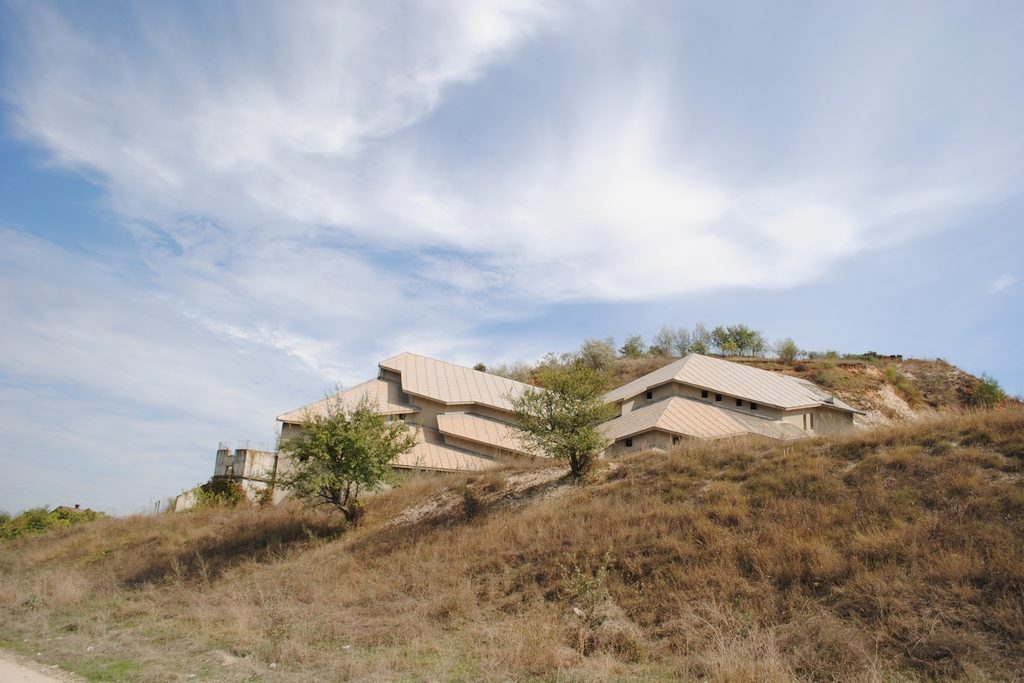

Basarabi is an archeological site and a rupestral complex extremely important for the history of Christianity from the territory of Romania. The rupestral ensemble from Basarabi shelters the first church and the first sanctums of a monastery, from the territory of Romania.
The complex, formed from rooms and galleries, is dug in a chalkstone hill from the proximity of the chalkstone extraction quarry.
The discovery of the first room from the complex from Basarabi was discovered on the date of the 11th of June 1957, following the expansion works of the chalkstone quarry from nearby. Caving in a part of the chalkstone border, there has been first discovered the church B1, situated at a higher level than all the other, and later on the others. The date of the foundation of the establishment could be made only according to the inscriptions from the nave of the church B4, and namely leat 6500, namely the year 992.
The churches and the galleries dug in the chalkstone hill from Basarabi – Murfatlar are situated on the north – western versant of the hill Tibisirul, at a distance of a couple of dozens of meters to the channel Danube – the Black Sea and in the immediate proximity of the great stone wave. The preparation works of the conservation conditions and of the diggings, organized for the means of other discoveries, ended on the date of the 15th of December 1960.
In the year 1961, the rupestral ensemble Basarabi was confided to the Archeology Institute, and later on, in the last five months of the year, it was confided to the Department of Historical Monuments. In the last year, 1962, there were discovered another two basins of the chalkstone quarry, on whose wall there were discovered crosses.
Following the archeological diggings, there was unveiled a composite structure made of rooms, galleries, tombs and premises, allocated chaotically according to the basins for extracting the chalkstone. The complex can be divided into three big sections according to the land: the rooms dug in the abrupt of the chalkstone hill, the massive peninsula and the others.
The building yard collective was formed by Ion Barnea and Virgil Bilciurescu, Petre Diaconu, Adrian Radulescu and Radu Florescu. There were taken mappings of the inscriptions and of the drawings found until that date, there was drawn the general plan and there were taken topographic sections. The ceramics, the household objects, diverse objects of chopped chalkstone, and even whole portions carved from the chalkstone walls were transported to the Regional Museum Dobrogea and the Archeology Museum from Bucharest.
By the attention of His Eminence Teodosie, this faith hearth was again revived on the date of the 4th of November 2004, with the titular saint of the Saint Teotim, the bishop of Tomis.
